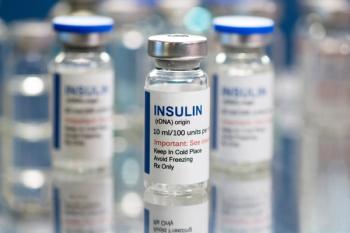
Diabetes Management: Combined Treatment with Insulin/GLP-1 Receptor Agonists
A Pharmacy Times Continuing Education session presented at the American Pharmacists Association’s (APhA) 2017 Annual Meeting & Exposition in San Francisco provided a clinical discussion on data associated with combining basal insulin with glucagon-like peptide-1 receptor agonist (GLP-1 RA) and the insulin combination products to achieve and maintain glycemic control in patients with
The discussion, led by Jennifer Goldman, PharmD, and Dhiren Patel, PharmD, both of the Massachusetts College of Pharmacy and Health Science, offered key insights into the benefits of starting combination therapy doses in patients compared to conventional sequential therapy.
Dr. Goldman noted that pharmacists should strongly consider insulin therapy if a patient demonstrates significant hyperglycemic symptoms and/or has dramatically high glucose or A1C levels. An additional oral agent, GLP-1 RA, or basal insulin is typically the next step to be considered if monotherapy does not achieve or maintain the target A1C over 3 months.
Consensus-based guidelines for non-pregnant patients with type 2 diabetes recommend A1C level targets of <7.0% (ADA Standards of Medical Care) or ≤6.5% (AACE), according to Dr. Patel.
Data from a retroactive cohort study that evaluated more than 80,000 patients with type 2 diabetes noted that for those patients on one oral medication, years to treatment intensification was 1.6 to 2.9 and on those patients with 2 oral medications, treatment intensification years ranged from 5.2 to 7.3 years.
Additionally, a retrospective review of more than 7000 patients with an A1C >8% from diagnosis evaluated the association between common therapies and time of exposure to hyperglycemia. The results determined that patients on a combination of metformin and sulfonylurea took about 26 months before intensification of therapy, followed by sulfonylurea alone (20.5 months), metformin alone (14.5 months), and diet plus exercise (8.7).
Dr. Goldman said that these 2 studies demonstrate the concept of
GLP-1 RAs address many of the core defects that impact hyperglycemia, according to Dr. Patel. Benefits include:
- Increased insulin secretion
- Decreased glucagon release
- Decreased food intake
- Slowed gastric emptying
GLP-1 RAs are proven in their efficacy when given by injection with an A1C reduction of between 0.8-2.0%. Current GLP-1 RAs available include:
- Exenatide (Byetta)
- Liraglutide (Victoza)
- Exenatide ER (Bydureon)
- Albiglutide (Tanzeum)
- Dulaglutide (Trulicity)
- Lixisenatide (Adlyxin)
GLP-1 RAs currently in development are:
- ITCA 650: Intarcia (Phase 3)
- Semaglutide: Novo Nordisk (Phase 3)
- Efpeglenatide: Sanofi (Phase 2b)
Nausea is the most frequent adverse effect experienced by patients, and usually subsides within a few weeks. GLP-1 RAs are contraindicated if the patients has a personal or family history of medullary thyroid cancer or multiple endocrine neoplasia type 2 (MEN2), and should not be used in patients with gastroparesis.
References
ADA Standards of Medical Care. Diabetes Care. 2017;40(suppl 1):S64-S74
AACE/ACE Consensus Statement. Endocr Pract. 2017;23(2):207-238.
Khunti K, et al. Diabetes Care. 2013;36(11):3411-3417.
Prasad-Reddy L, Isaacs D. Drugs Context. 2015;4:212283
Goldman J, Patel Dhiren. Managing Diabetes with Insulin/GLP-1 Receptor Agonist Combinations. Presented at: American Pharmacists Association 2017 Annual Meeting & Exhibition. Mar. Mar. 24-27, 2017. San Francisco.
Newsletter
Stay informed on drug updates, treatment guidelines, and pharmacy practice trends—subscribe to Pharmacy Times for weekly clinical insights.










































































































































































































